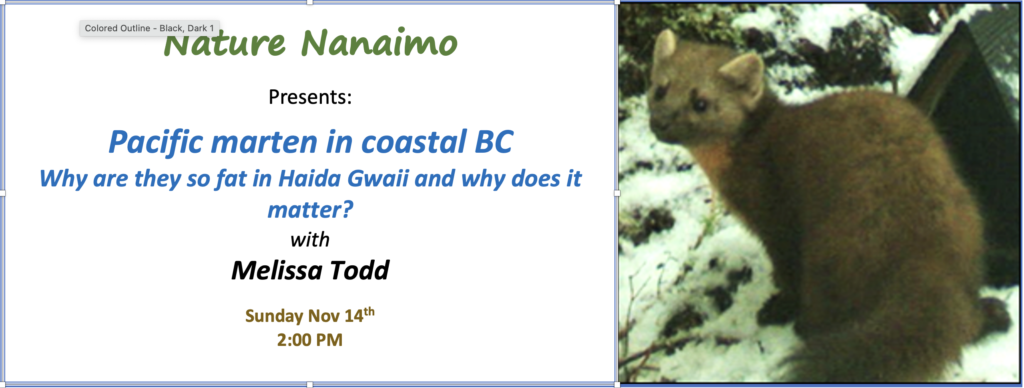In her current role as a provincial government research scientist with the Coast Area Research Section of the BC Ministry of FLNRORD, Melissa leads and participates in collaborative applied field research into the biology and ecology of a range of coastal vertebrate and invertebrate wildlife species and communities: from bugs to bears. She investigates the cumulative interactions of land use strategies and climate impacts on wildlife communities at a range of spatial scales, with a focus on fauna associated with dead wood and riparian habitats. Her research fills scientific knowledge gaps to improve the success of wildlife conservation in forest and land management policy, planning and practice in BC.
Melissa will be presenting on behalf of research team: David Breault (UNBC), Chris Johnson (UNBC), Rich Weir (MOECC Conservation Science), Berry Wijdeven (FLNRORD Haida Gwaii District), David Nagorsen (RBCM)
Smaller carnivores – often referred to as “mesocarnivores”, including members of the mustelid family like martens – contribute in unique ways to the simplified food webs of coastal islands, which are sensitive to the pressures of industrial land use and introduced species. Coastal populations and sub-species of Pacific marten (Martes caurina) in Washington, Oregon and California are at risk due to human activity. But what happens when a mesocarnivore is the top predator? In the island archipelago of Haida Gwaii, there are only three mammalian carnivores – all mustelids (Pacific marten, river otter, and Haida ermine). Aside from black bears, there are no large mammalian carnivores present. We studied marten response to introduced prey species, such as the Sitka black-tailed deer and red squirrels, and to patterns of land use on Graham Island in Haida Gwaii. I will discuss marten condition, diet, distribution, implications for the conservation of endemic species that martens may compete with or prey on in Haida Gwaii, and implications for Pacific marten conservation in coastal BC.

